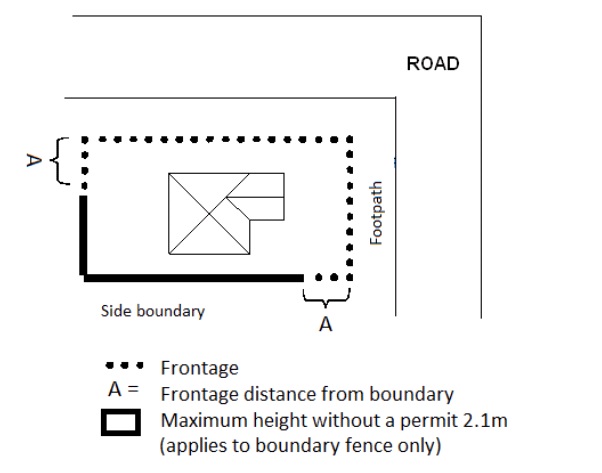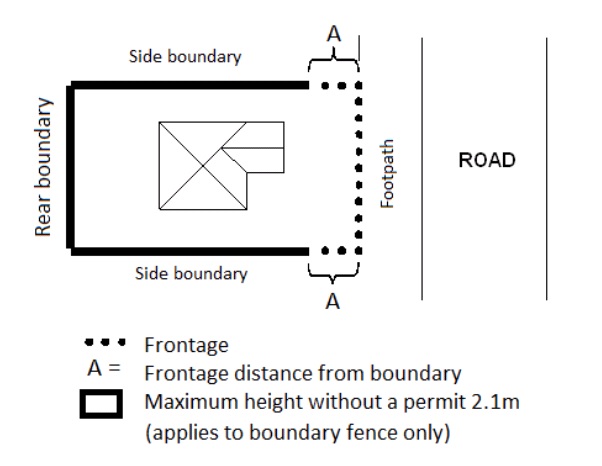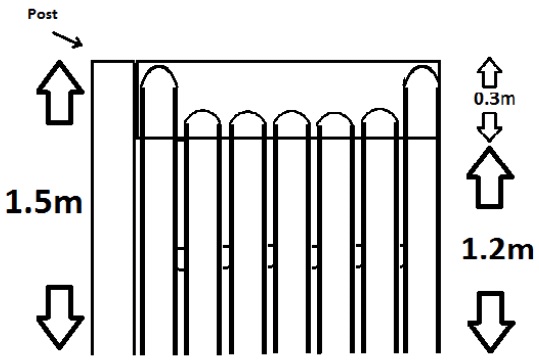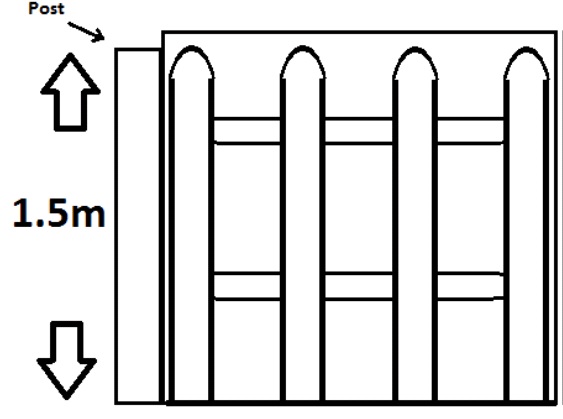Side and Rear Fences (not frontage fences which face the road)
Derwent Valley Council receives many enquiries relating to fencing matters.
These FAQs have been produced to assist customers with enquiries relating to boundary fencing and special requirements for swimming pool fencing.
Does Council become involved in fencing matters?
Council does not intervene in matters between neighbours over boundary fences. Council will only become involved if the property is adjoining Council land or if the fence requires a planning or building permit.
Is my neighbour obligated to share the costs of the new fence?
Under the Boundary Fences Act 1908 neighbours are required to contribute half the cost of erecting a standard fence.
What is a standard boundary fence?
The standard fence in a residential area is a 1.5 metre high paling fence.
The standard fence in a rural area is a seven wire post and wire fence.
How do I find out who my neighbour is if the property is rented or is vacant land?
The owner of land is shown on the land title which can be obtained through the Land Titles Office at 134 Macquarie Street, Hobart or from the Service Tasmania branch in High Street, New Norfolk.
How do I approach my neighbour regarding the fence and sharing of costs?
Council recommends talking to your neighbour first to come to an agreement. It is recommended you obtain three quotes for the construction of the fence. Your neighbour need only pay half the cost of the lowest quote.
What happens if my neighbour will not contribute towards the cost of the boundary fence?
If you are unable to come to a suitable agreement for payment of the fencing costs you may wish to serve a notice on your neighbour through the Boundary Fences Act 1908.
What do I need to do if Council owns the adjoining land?
As a neighbour, Council is required to contribute towards the cost of boundary fencing. Council requires requests for the replacement or erection of the boundary fence to be in writing and include three quotes for the standard fence for the area. In most cases Council will pay half the lowest quote.
What happens if the fence borders onto a road?
Under the Boundary Fences Act 1908 no local body having the administration, management, or control of any road, including the Council is liable to contribute towards the erection or repair of any dividing fence between any road and the land adjoining such road. Council does not share in the cost of fences on roads or footways.
When do I need a planning permit from Council?
Under the Derwent Valley Interim Planning Scheme 2015, you do not need a permit for the construction or demolition of:
(a) side and rear boundary fences not adjoining a road or public reserve and not more than a total height of 2.1m above natural ground level;
(b) boundary fences adjoining a road or public reserve, and not more than a total height of 1.2m above natural ground level;
(c) retaining walls, set back more than 1.5m from a boundary, and which retain a difference in ground level of less than 1m;
(d) fencing of agricultural land or for protection of wetlands and watercourses;
(e) fencing for security purposes, no higher than 2.8m, that is within the Port and Marine Zone;
(f) fencing for security purposes, no higher than 2.8m, at an airport; and
(g) temporary fencing associated with occasional sporting, social and cultural events, construction works and for public safety.
Note: Though you may not require a planning permit, you may still require a building permit for some fence types.
Planning controls for fence height within a frontage
You will need a permit if your fence, within the ‘frontage’ of your property, is above a certain height or below a certain ‘transparency’. The following table sets out these standards for particular zones. The terms ‘frontage’ and ‘transparency’ are explained in the figures below.
Zone | Frontage distance from boundary | Permitted Height if Solid | Permitted Height if providing a Uniform Transparency (%) above Solid Height |
10.0 General Residential | 4.5m | 1.2m | 1.8m if 30% above 1.2m |
12.0 Low Density Residential | 4.5m | 1.2m | 1.5m if 30% above 1.2m |
13.0 Rural Living 16.0 Village | 4.5m 4.5m | 1.2m 1.2m | N/A 1.5m if 50% above 1.2m |
17.0 Community Purpose | 4.5m | 1.2m | 1.5m if 50% above 1.2m |
18.0 Recreation Zone | 4.5m | 1.2m | 1.5m if 50% above 1.2m |
19.0 Open Space Zone | 4.5m | 1.2m | 1.5m if 50% above 1.2m |
20.0 Local Business Zone | 4.5m | 1.2m | 1.5m if 50% above 1.2m |
21.0 General Business Zone | 4.5m | 1.2m | 1.5m if 50% above 1.2m |
24.0 Light Industrial Zone | 10m | 1.2m | 2.1m if 50% above 1.2m |
25.0 General Industrial Zone | 10m | 1.2m | 2.4m if 50% above 1.2m |
26.0 Rural Resource Zone 27.0 Significant Agriculture | 4.5m N/A | 1.2m N/A | N/A N/A |
28.0 Utilities Zone | 10m | 1.2m | 2.1m if 50% above 1.2m |
29.0 Environmental Management Zone | N/A | N/A | N/A |
32.0 Particular Purpose Zone 1 | N/A | N/A | N/A |
34.0 Particular Purpose Zone 3 | 4.5m | 1.2m | 1.8m if 30% above 1.2m |
What is the ‘frontage’ of my property?
The figures below outline what a frontage is for two lot types

Figure 1: Frontage for corner lots

Figure 2: Frontage for other lots
What does ‘uniform transparency’ mean?
If a fence is ‘transparent’ it has been designed so that it can be looked through. If a fence has a ‘uniform transparency’ it means the level of visibility through the fence is the same for the whole length of the fence. Fences at or near the frontage of a property which are not transparent may present a safety hazard for motorists and pedestrians as they may block sight lines. A "see through" fence also provides better security for the house. Council’s Development Engineers recommend 50 per cent transparency – that is, the space between the pickets is equal to the picket width for any part of the fence above 1.2m in height.
The following figures are two examples of achieving transparency either above solid height or as a whole.

Figure 3: 50% Uniform transparency above solid height

Figure 4: 50% Uniform transparency as a whole.
What are the requirements regarding maintenance of boundary fences?
Owners of property are required to keep their fences in reasonable repair.
Property owners who have dogs or livestock confined within their property are encouraged to regularly check their boundary fences and make repairs as necessary.
Council is able to impose fines on owners of animals (in particular dogs and livestock) who allow their animals to roam at large or escape from their property.
How can I obtain a copy of the Boundary Fences Act 1908?
Copies of the Act can purchased from any Service Tasmanian shop or through the internet at www.thelaw.tas.gov.au.
Who can help if I need to serve a notice on my neighbour?
Free advice may be available from the Legal Aid Service on 1300 366 611. Alternatively, your Solicitor will be able to assist.
